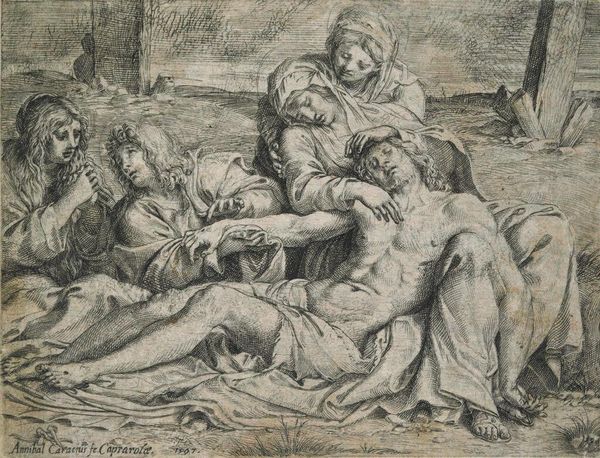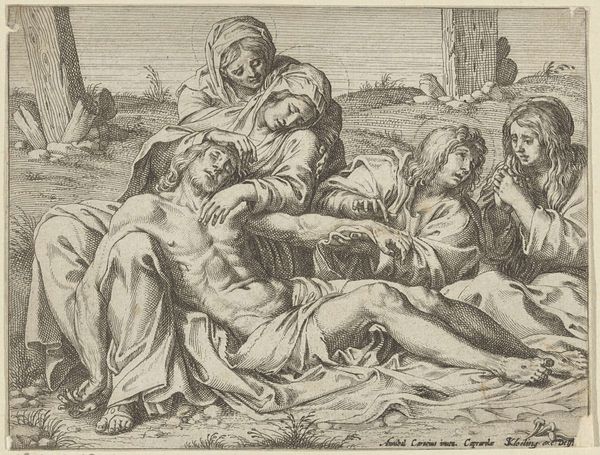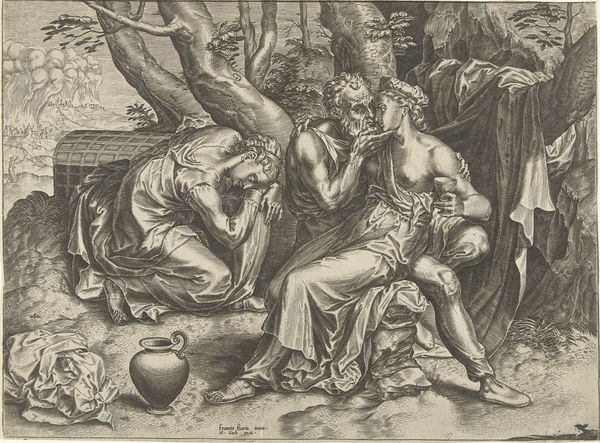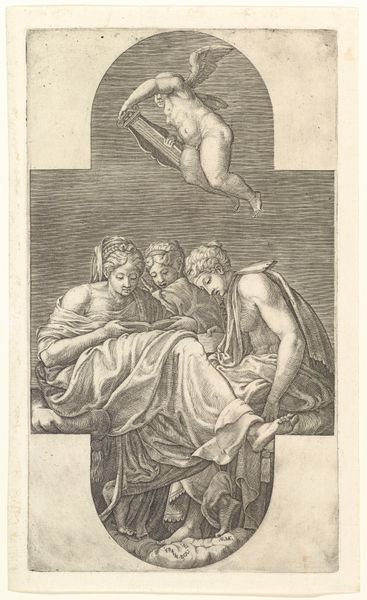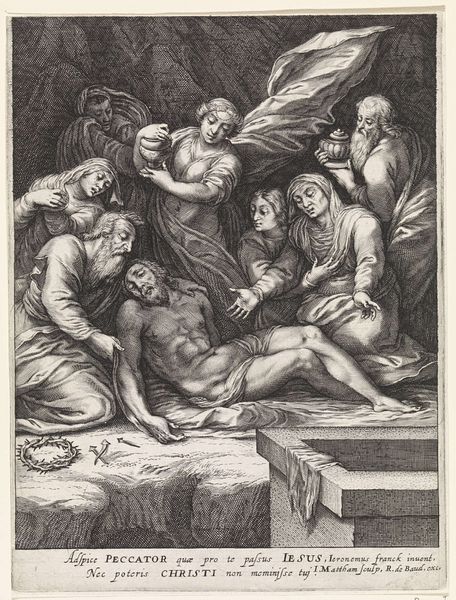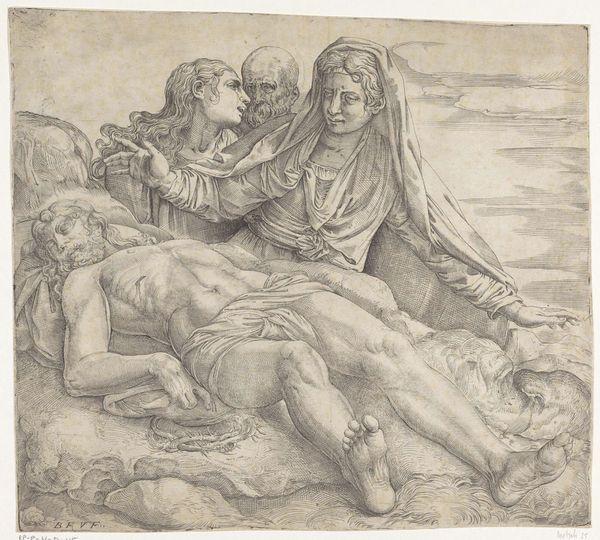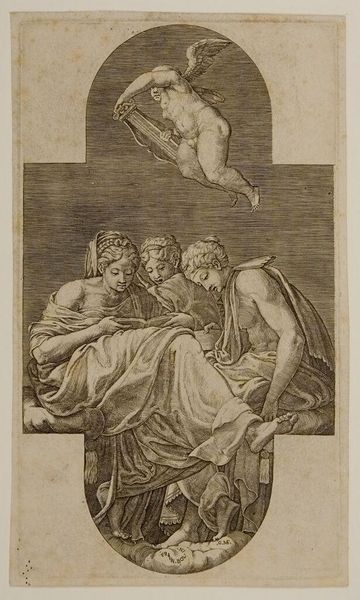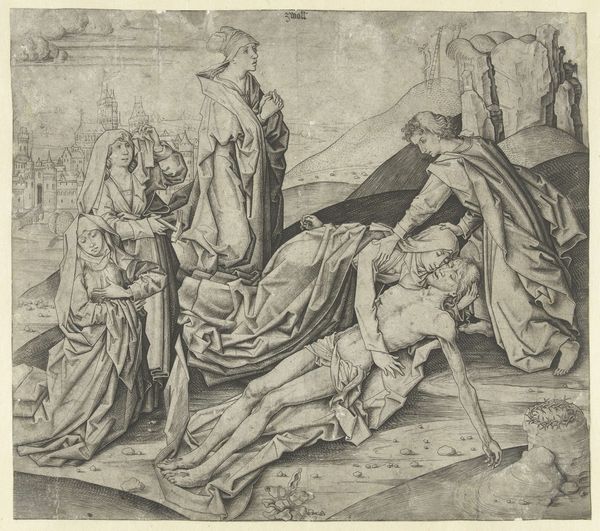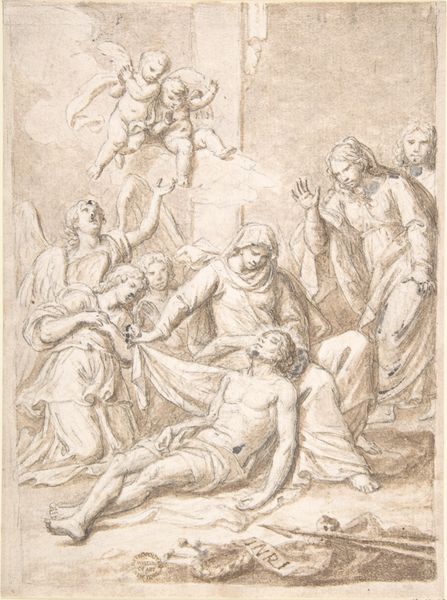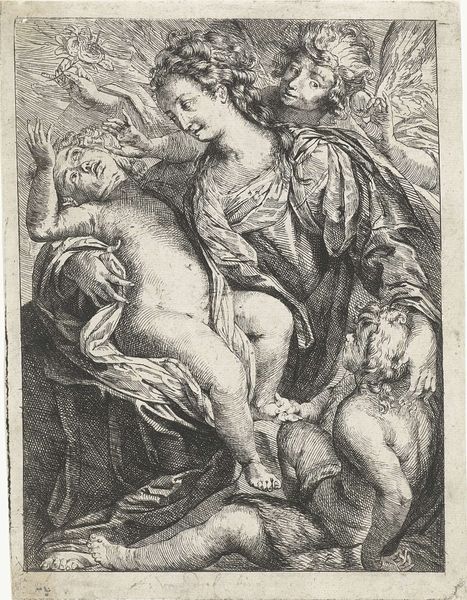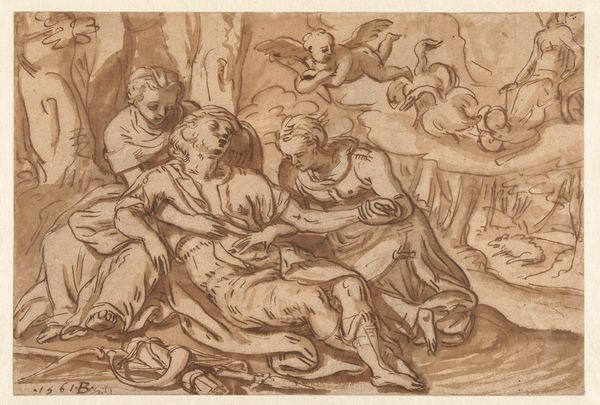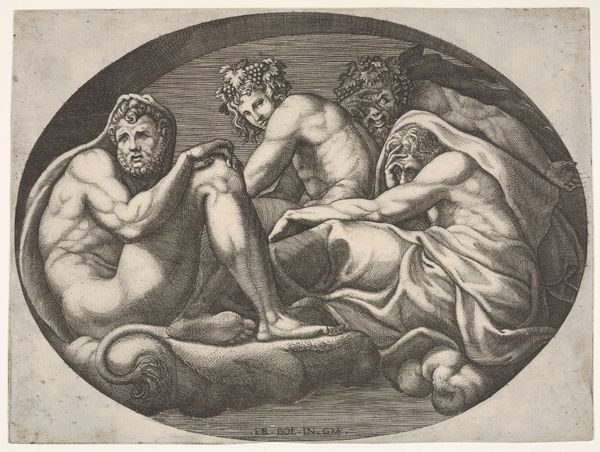
print, etching
#
baroque
# print
#
etching
#
figuration
#
history-painting
Dimensions: height 122 mm, width 162 mm
Copyright: Rijks Museum: Open Domain
Editor: This is Agostino Carracci's "Bewening van Christus," or "Lamentation of Christ," an etching from 1598 currently held at the Rijksmuseum. I am struck by the sheer grief captured in the figures' postures, particularly in the face of Mary Magdalene. What social and political messages do you see conveyed through this work? Curator: This etching allows us to reflect on the social function of art during the Counter-Reformation. The intense emotion and drama, characteristic of the Baroque, served to reinforce the Church’s teachings, emphasizing suffering and sacrifice to foster religious fervor. How does Carracci's composition serve as a narrative of gendered mourning? Editor: That's interesting. I hadn’t considered it from a gender perspective. Are you referring to the prominent role of women in mourning? Curator: Exactly. Notice how the Virgin Mary and Mary Magdalene are positioned. Their active expressions of grief – cradling Christ, weeping openly – invite viewers to contemplate not just the physical suffering, but the emotional labor historically associated with women, particularly within familial or community contexts facing loss or tragedy. How does the depiction challenge or reinforce existing power structures, do you think? Editor: It humanizes them, definitely. It's powerful to consider how art from this period both reflected and potentially reshaped the understanding of gendered roles. Thanks for showing me a different view. Curator: And thank you for recognizing the nuances within this historical artwork. By looking at it through intersectional lenses, we can appreciate its continued relevance.
Comments
No comments
Be the first to comment and join the conversation on the ultimate creative platform.
